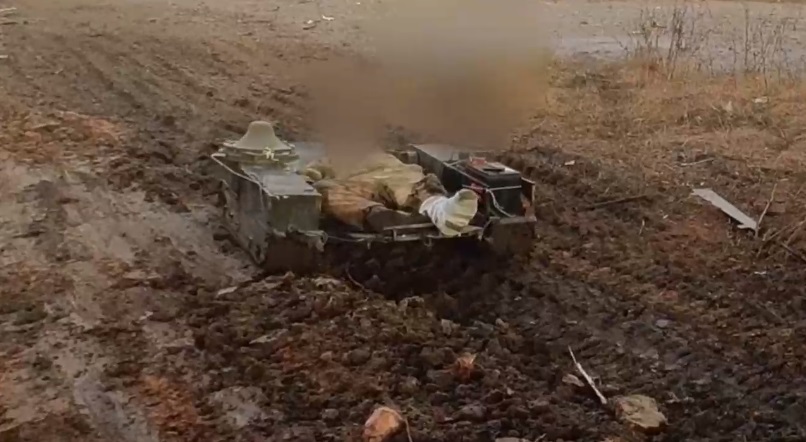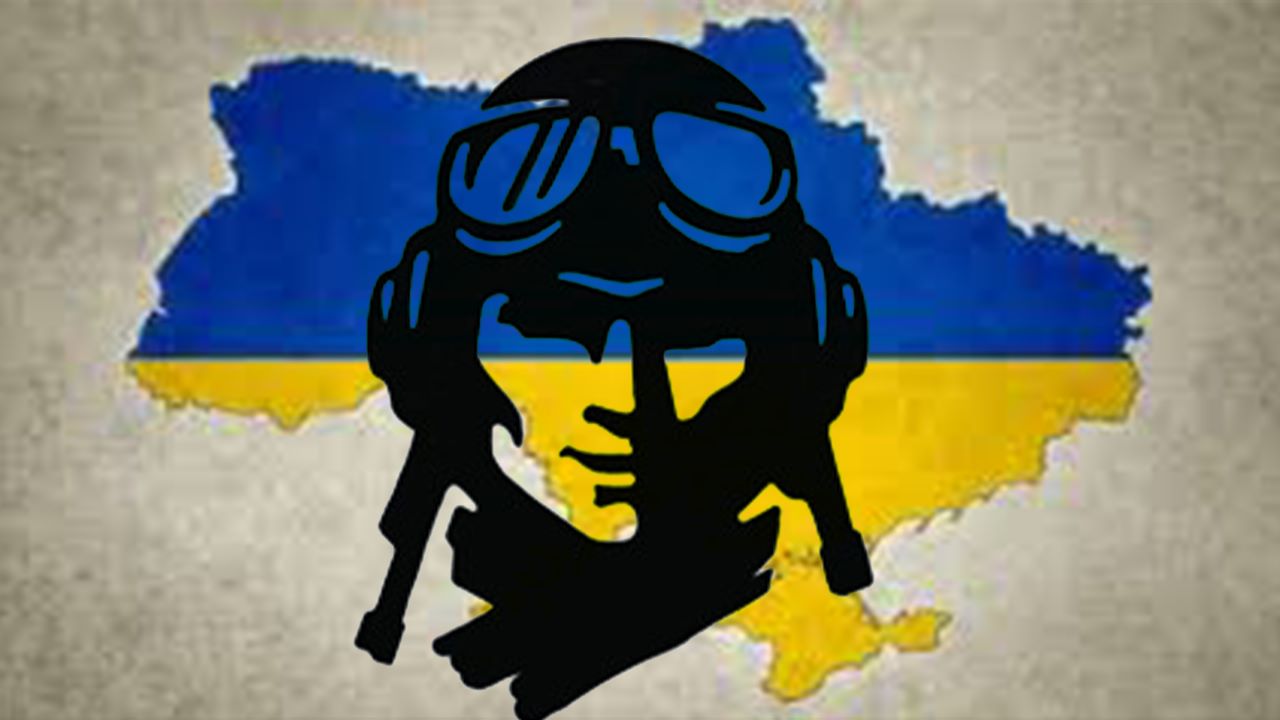In possibly the first employment of an unmanned ground vehicle (UGV) in war, a Russian army unit in south-central Ukraine used a tracked, remotely controlled platform for tactical resupply and casualty evacuation purposes.
Even more interesting was the use of not only the UGV but also an onboard Electronic Warfare (EW) system that prevented Ukrainian kamikaze drones from destroying it, a video of the encounter shows. The UGV used in the operation was a self-developed invention of the local military formation.
The clip was shared on the Telegram channel ‘Pomosh Zemlyakam (PZ)’, which describes itself as a platform offering “Assistance to the soldiers of the Russian Armed Forces on the frontline.”
Many such collectives by Russian citizens, soldiers, and their families have often publicized other independent drone projects by private Russian companies, academia, and soldiers over the last year. They aim to arrange crowdfunding and private investments for such undertakings in Russia.
The development is consistent with a previous EurAsian Times report from late February this year, which featured two makeshift armed UGVs meant to take on Ukrainian infantry and hardened positions in the east.
The platforms can easily be inferred to have been primarily crude efforts with no professional industrial origins, as seen from the machining and body finish. This is broadly owing to Russia’s overall lag in the drone and robotics industry, spurred only after the Ukraine war began.
Video Shows UGV In Action
The video shows a simple tracked UGV, with an open middle section holding battlefield supplies and ration, moving away from the camera and then an overhead UAV capturing the rest of its journey.
The robot briefly shows off its maneuvering capabilities, spinning on the ground and negotiating various terrain. Another footage from an overhead drone shows it carries a supply payload and soldiers from inside a bunker presumably controlling it.

The UGV emerges from under a bridge and heads towards what appears to be a dug-out trench line, where two soldiers emerge and unload the supplies. Given the scene and the context, the payload can be assumed to be ammunition, dry rations, or medical supplies.
The same UGV can then be seen heading back when a small flying object — possibly a Ukrainian kamikaze drone — is heading towards it. The drone, however, explodes on the ground. The PZ Telegram channel attributes this to the “Volnorez jamming station,” which the device presumably disables, causing it to veer off target.
The UGV also delivers additional supplies to the same trench line. This time, while traveling back empty, another small drone flies towards it and collides with it head-on. But it bounces off and collapses on the ground before exploding.
Whether this was owing to jamming, hitting a thicker part of the UGV, or a technical glitch with the kamikaze drone’s warhead is unclear. But it does indicate the uncrewed tracked vehicle has some degree of survivability on the ground.
The video then briefly shows a recording shot off the control console, a simple hand-held screen with operating yokes. This bears the simple and uncomplicated nature of the UGV, made from off-the-shelf commercially available drone parts.
In the last part of the video, the UGV brings back a wounded soldier with his left foot injured, demonstrating a credible CASEVAC capability.

Made By Soldiers, Of Soldiers, For Soldiers
PZ said the Russian unit was fighting in the “battles for the Avdeesk industrial zone.” The soldiers “used the remote-controlled tracked platforms designed and manufactured by the fighters to deliver ammunition, food, and water to the most dangerous and hot areas.” Some Ukrainian and Russian Telegram channels conclude that the unit involved is the “87th Rifle Regiment.” However, this information could not be verified.
Russian Tracked UGV Transports Supplies, Wounded; Comes Under Fire from Ukrainian FPV Kamikaze Drones: Video of a small-sized transport unmanned tracked platform used in the Avdeevsky direction by the Russian side. It is said that “in the battles for the Avdeevsk industrial zone,… pic.twitter.com/RAxhyjPZ0P
— EurAsian Times (@THEEURASIATIMES) December 5, 2023
From the framing of the information, it can be assumed that the UGV has been in operation for a few months and inducted into service after basic testing. A certain degree of involvement from the technical and engineering units of the militias from the Donetsk People’s Republic (DPR) can also not be denied since their armed militias have been running their own drone pilot courses and training programs.
- The author can be reached at satamp@gmail.com
- Follow EurAsian Times on Google News




